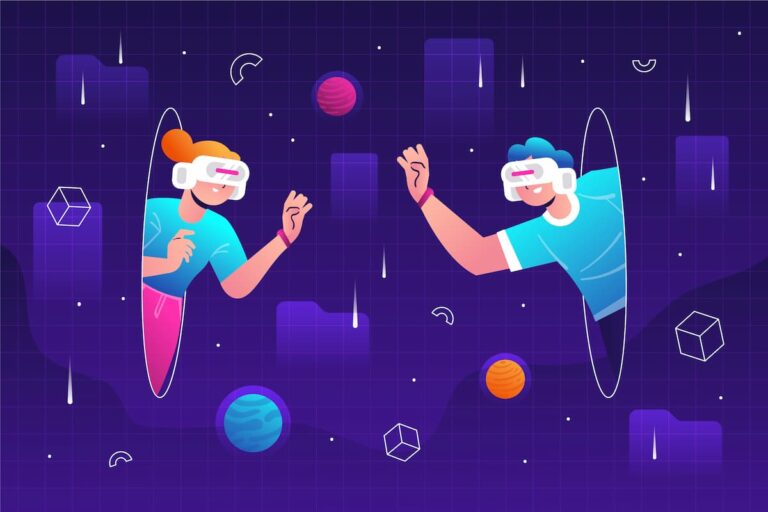Table of Contents
Imagine a world where students could learn about historical events, engineering, or surgical procedures not from theory alone but by seeing it with their own eyes. For example, students won’t just listen to the story of Pompeii but see it as if they are living in it. Or get practical knowledge on surgeries without a fear of harming a human.
Despite sounding like a plot for a sci-fi movie, this is the reality that we’re living in right now, thanks to extended reality (XR) technology. While most education technologies focus on helping learners online, XR makes offline education more engaging and informative by providing visual context to the lesson.
And while universities only start to experiment with extended reality, it shows great potential, despite some challenges adopters might face.
Extended reality explained
Overall, extended reality is an umbrella term that covers multiple technologies. It includes virtual reality (VR), augmented reality (AR), and mixed reality (MR). At first glance, these terms might sound similar, but they are used for different tasks and “extend” reality in different ways;
Virtual reality creates a fully immersive digital environment that simulates real or imagined experiences, allowing users to interact with it through a computer-generated world using specific hardware such as VR headsets, motion controllers, and haptic feedback devices.
Augmented reality improves the user’s perception by integrating virtual objects, information, or visuals into their physical surroundings through devices like smartphones, AR glasses, or headsets.
Mixed reality blends the digital and physical worlds allowing real and virtual objects to interact in real time. Similar to AR, users can see both virtual and real objects; however, MR allows users to interact with digital objects the same way as if they were real.
Over the last couple of years, XR technologies have undergone impressive and much-needed quality improvements. Nowadays, the education sector is one of the pioneers in XR adoption.
Extended reality in the education market
While the biggest market for XR is in the gaming industry, the educational sector is close behind. In 2023, the global XR market in the education sector was valued at $592.7 million USD, and it is expected to increase to $3,828.6 billion USD by 2030.
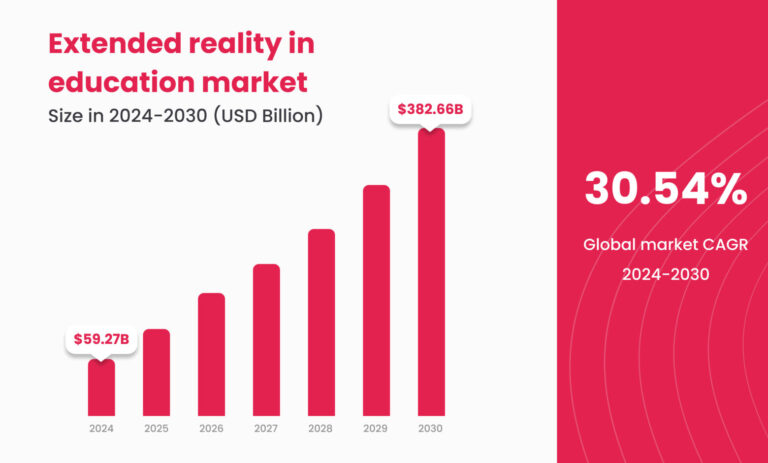
This high interest in investing comes from two major reasons: significant technological improvement and interest from universities. Here are a couple of examples:
Fulton Schools are adopting XR tools to prepare students for the semiconductor industry. An associate professor, Umberto Celano, has explained the reasoning behind this decision: “It enables us to bring realistic models of tools and large, expensive machinery into the classroom for students to examine and interact with.”;
Kentucky Schools has brought over 2,000 VR headsets for students to fuel up their immersive learning program. According to the report, schools use XR technology to create a virtual campus for students to meet and collaborate;
Google aims to improve their services by investing in its in-house XR projects and acquiring new software and hardware features via mergers.
The attention towards XR technologies wasn’t unnoticed by researchers as well. For example, a recent ResearchGate article aimed to improve trust of people towards extended reality tech. One of the scientists behind the article has concluded that:
“Educational institutions can develop a reliable XR ecosystem that enhances educational advantages while reducing potential risks. XR could transform education by offering immersive and captivating learning experiences that empower students and equip them for the future.”
As a result, while some universities and schools are only starting to experiment with XR adoption, others are already using it as part of the learning process.
See also: Virtual Reality VS Augmented Reality VS Mixed Reality
Practical applications of extended reality in education
Traditional learning can hardly be described as “immersive”. Extended reality changes that by adding important visual context to the teacher’s lecture.
For example, in medical schools, students use VR simulations to practice surgical procedures in a risk-free environment. Student engineers can use MR to overlay schematics and 3D models onto physical objects. History classes use XR as a “gateway” to bring the past to life, allowing students to explore historical events and cultures firsthand.
Extended reality at Colorado State University
At Colorado State University’s Clapp Lab, medical students are replacing traditional cadaver dissections with VR simulations. Instead of using scalpels, they put on VR headsets connected to high-powered workstations, allowing them to examine the human body in greater detail.
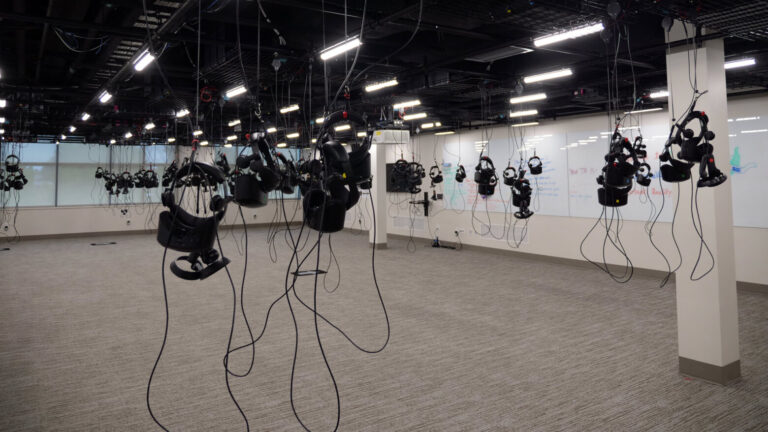
All of this happened partly thanks to HP. As an active supporter of XR in education, they collaborated with Educause on initiatives like the Campus of the Future program, which explores how colleges and universities can integrate XR into classrooms. HP has also launched the Applied Research Network, which assists over twenty institutions in implementing XR technology.
Paul Martin, an HP distinguished technologist emeritus, highlighted that concepts that are difficult to grasp in traditional 2D formats—such as those presented in textbooks or on chalkboards—are often better understood in 3D environments provided by XR. He believes XR will play a central role in the future of education by making abstract concepts more tangible and immersive.
Florida International University uses XR to teach critical thinking
At Florida International University (FIU), XR is used to enhance social and cognitive skills among first-year students. As part of the First-Year Experience course, FIU developed a virtual reality activity called “COMMUNITY VR.”
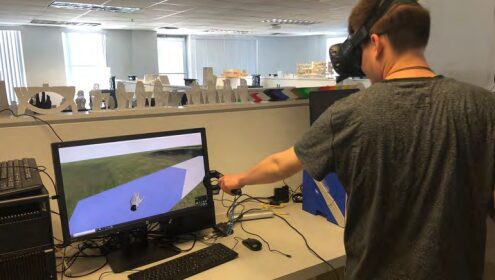
In this simulation, students enter a virtual environment and quickly realise that water is rising around them. To prevent being submerged, they must collaborate in small groups to build structures using virtual blocks. The exercise reinforces four essential skills for university success: creativity, collaboration, critical thinking, and communication.
According to John Stuart, associate dean for cultural and community engagement at FIU, the VR experience mirrors the challenges of adapting to university life. Just as VR can initially feel unfamiliar, new students often struggle with the transition to college. The activity helps them practice teamwork and problem-solving in an engaging, low-stakes environment.
Extended reality as a tool for art: a case of the University of Nebraska-Lincoln
At the Johnny Carson Center for Emerging Media Arts at the University of Nebraska-Lincoln, XR is being used to explore its impact on live theatre and performance.
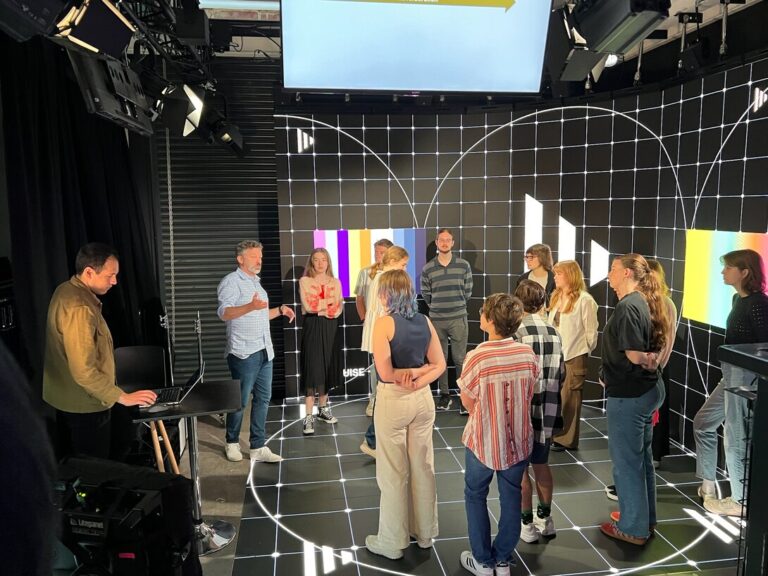
The curriculum integrates XR technology with performing arts, mainly through courses involving motion capture and dancers’ body data.
These techniques allow performers to control avatars, sound, lighting, and visual effects in real-time, demonstrating how XR can merge digital and physical elements in stage production.
See also: Why tailors and designers need VR, AR and 3D tools?
Challenges of implementing extended reality in education
Implementing extended reality might sound compelling at first, but there are some challenges in the adoption process. The adoption threshold is fairly high, and here’s why.
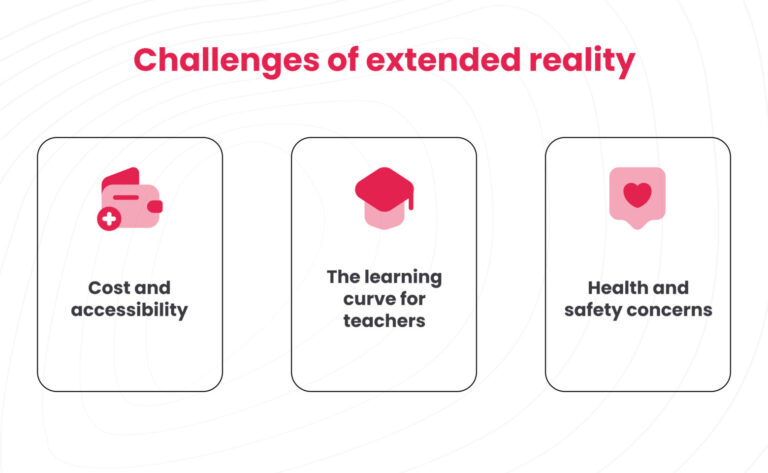
Cost and accessibility
Extended reality tools aren’t cheap, especially the high-quality ones. While some institutions might have enough funding for adoption, most of them just don’t have enough funds for it. Keep in mind that it’s not a one-payment too — maintenance and updates for XR hardware require continuous investment.
The learning curve for teachers
While the younger generation won’t have any problems with XR technologies, older teachers might be unfamiliar with the concept and wouldn’t know how to integrate it into their lessons. To open up the full potential of extended reality tools, there might be a need for additional teacher training.
Health and safety concerns
This concern is mostly directed at VR headsets specifically, but it’s also applicable to other XR tools. Excessive use of these headsets can cause eye strain, motion sickness, and discomfort. Additionally, as with any other software, XR apps collect users’ personal information, opening up data privacy concerns.
Tips on how to implement extended reality in education
Successfully integrating XR into education requires careful planning and a strategic approach. In order for the adoption to go smoothly, here are a couple of tips.

Start with low-cost solutions
Schools that are new to XR can begin by using AR applications that work with smartphones and tablets, eliminating the need for expensive headsets. Simple apps that overlay information on physical objects can enhance lessons without requiring a major investment.
Provide training for teachers
The older generation of teachers might not be familiar with XR technologies at all. They might be reluctant to adopt it in their teaching process because of it. To mitigate this, schools could offer training sessions and workshops to familiarise teachers with extended reality.
Focus on specific learning goals
Not every lesson in school or university must use XR. Consider where it’s appropriate to use and which subjects and topics would benefit from extended reality.
See also: How to Make UI/UX for AR Navigation App
Conclusion
Extended reality is one of those technologies that would have been considered sci-fi just 20 years ago. Nowadays, XR has the power to improve the learning experience of students.
From virtual field trips to hands-on medical training, extended reality makes complex concepts easier to grasp. However, the threshold for adoption is still high due to costs and other challenges. But as with any tech, with time, challenges become easier to mitigate, and XR adoption will become a no-brainer for any school or university.
FAQ
Not quite. Virtual Reality (VR) falls under the umbrella of Extended Reality (XR), which is a more encompassing term. It includes:
Virtual reality immerses users in fully digital environments;
Augmented Reality (AR), which adds digital elements to the physical world;
Mixed Reality (MR), where physical and digital objects interact in real time.
Essentially, XR serves as the overarching category for all these technologies.
Yes, but with some considerations. XR can make learning more interactive by allowing students to explore concepts in a hands-on way, whether they’re dissecting a virtual frog, walking through historical sites, or practising surgical procedures.
It also supports remote collaboration and can enhance training in technical fields. However, successful implementation depends on proper planning, resources, and educator training.
Start small and focus on purpose, not just technology. Schools and universities can introduce XR by:
Using affordable AR apps that work with smartphones and tablets;
Incorporating VR simulations for subjects like science, history, and engineering;
Training teachers on how to integrate XR into lesson plans;
Ensuring accessibility so all students, regardless of background or ability, can benefit.
The key is aligning XR tools with learning goals rather than using them just for innovation.
Before adopting XR technologies, there are some challenges you should know about:
Cost: Quality XR hardware and software can be expensive, and not all schools have the budget;
Accessibility: Not all students have access to XR devices, which could widen the digital divide;
Health and Safety: Prolonged use of VR headsets may cause eye strain, dizziness, or disorientation;
Learning Curve: Educators need time and training to use XR effectively in the classroom.
Knowing what to expect during XR adoption should help you mitigate the potential drawbacks of these technologies.


